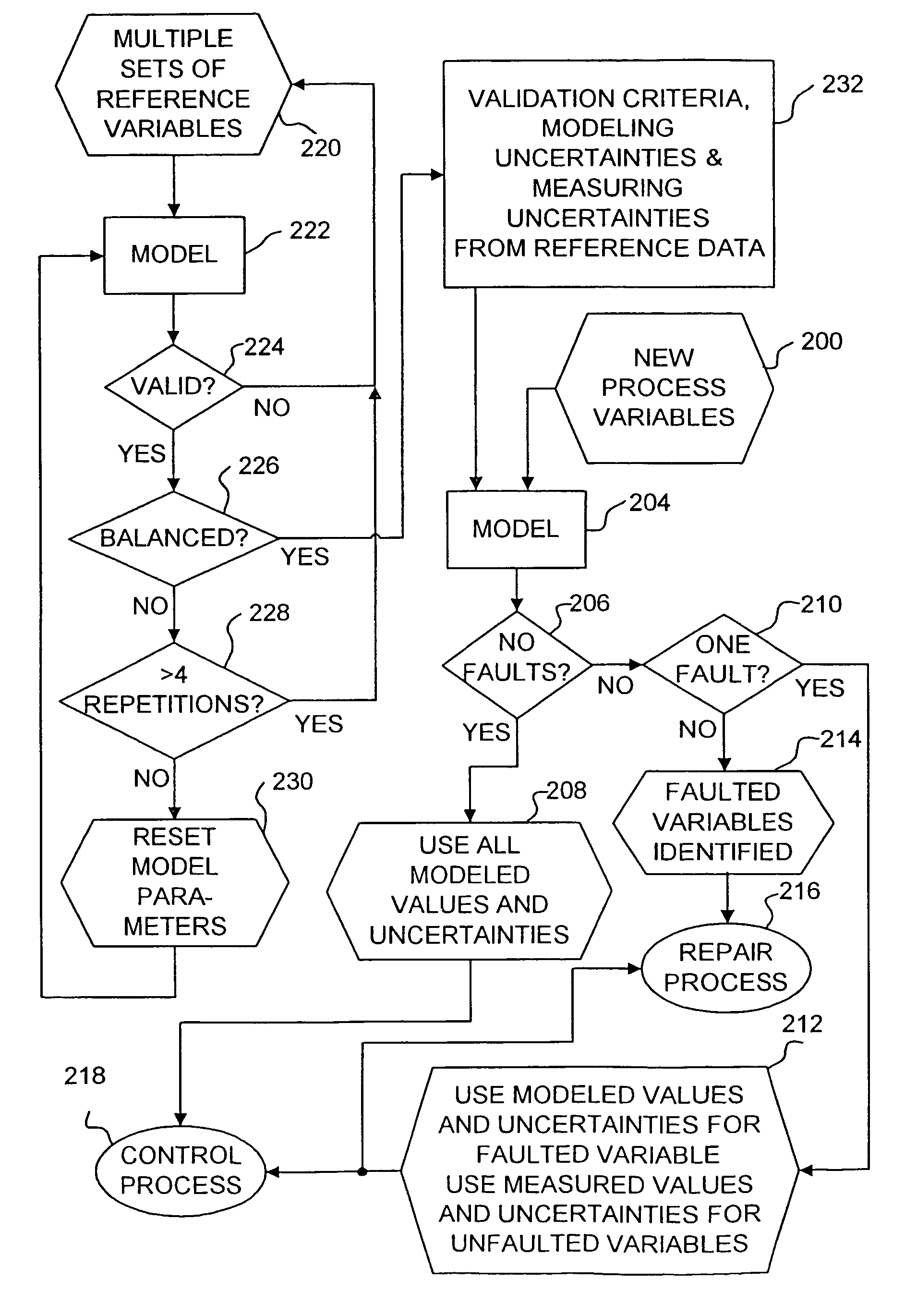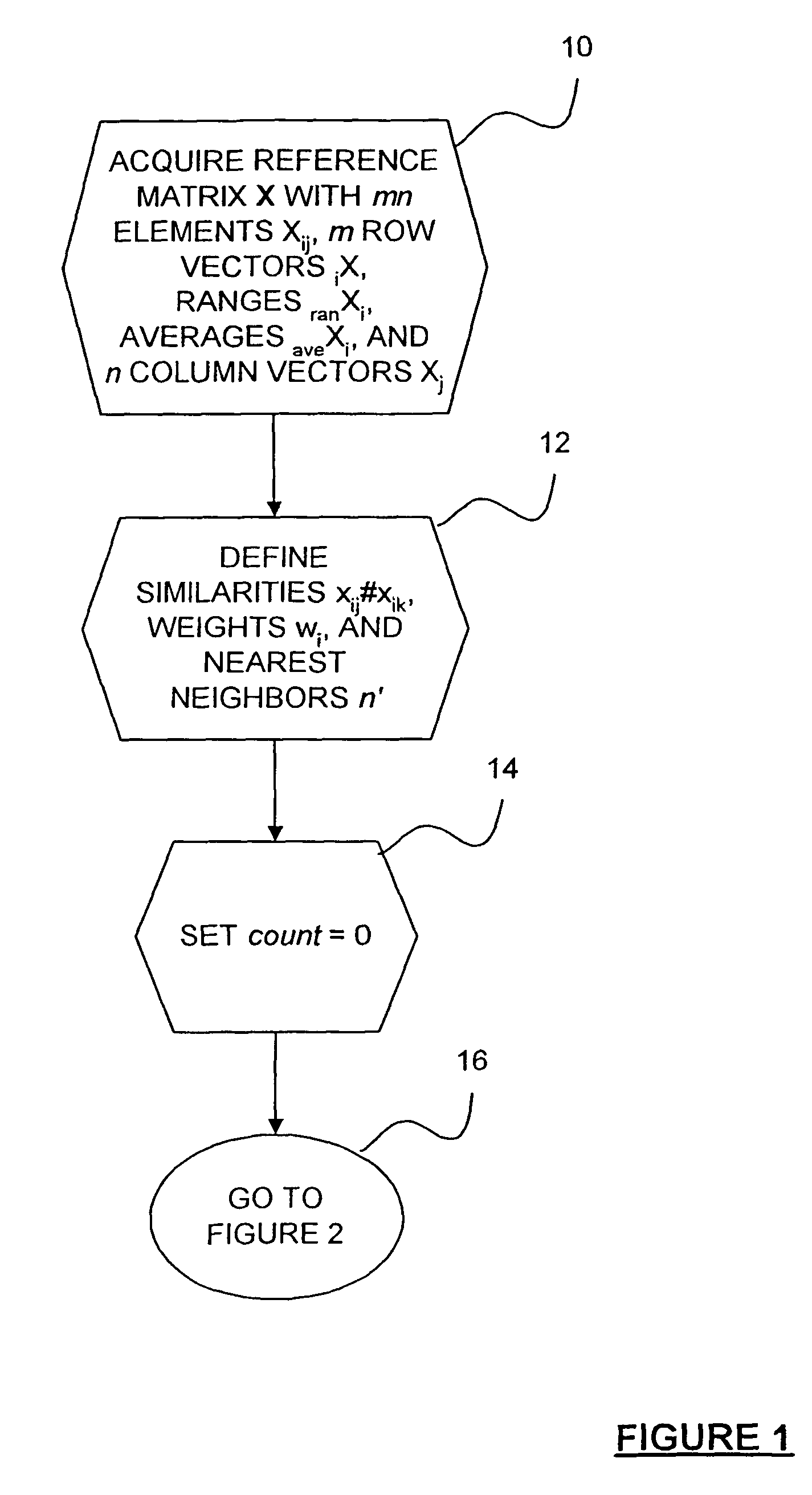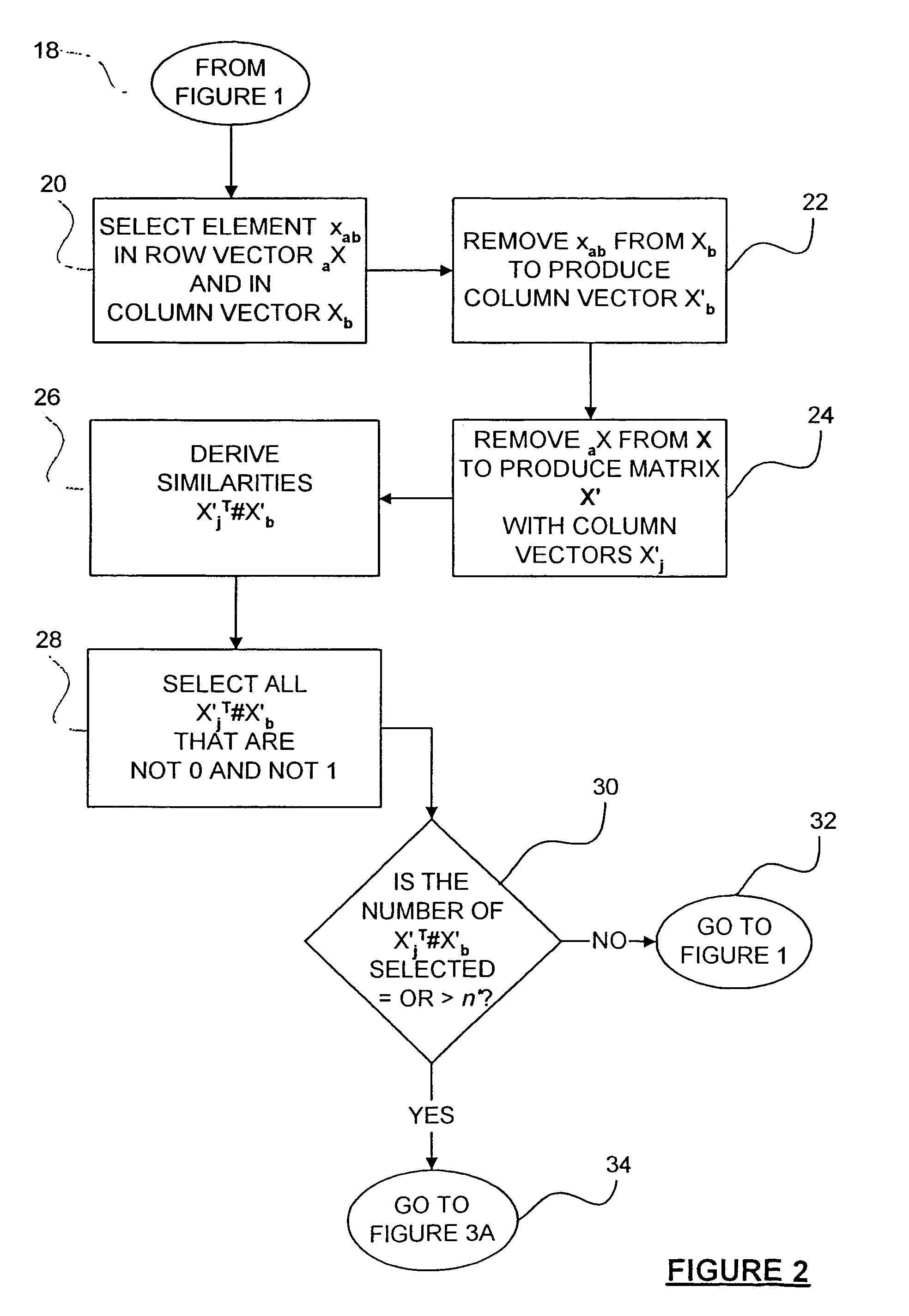Method for estimating and reducing uncertainties in process measurements
a technology of process measurement and uncertainty, applied in the field of process measurement uncertainty estimation and uncertainty reduction, to achieve the effect of facilitating control of m variable multivariate system or process
- Summary
- Abstract
- Description
- Claims
- Application Information
AI Technical Summary
Benefits of technology
Problems solved by technology
Method used
Image
Examples
first example
[0059]In this example, a reference set of measurements is modeled, then a non-reference set of unfaulted measurements is modeled, and finally the same non-reference set of measurements with one fault introduced is modeled.
[0060]The Minnesota Multiphasic Personality Inventory—2 (“MMPI—2”; see: Minnesota Multiphasic Personality Inventory—2 Manual for Administration and Scoring, University of Minnesota Press, Minneapolis, Minn., 1989) is used to create a human personality profile comprising 13 basic scales:
[0061]
1LLie2FInfrequency3KCorrection4HsHypochondriasis5DDepression6HyConversion Hysteria7PdPsychopathic Deviate8MfMasculinity-Femininity9PaParanoia10PtPsychasthenia11ScSchizophrenia12MaHypomania13SiSocial Introversion
[0062]For a large number of inventories from a community population the T-scores for each of these scales may be expected to have an average value of 50 points with a standard deviation of 7.5 points. This standard deviation is generally estimated to comprise a combinati...
second example
[0174]The preceding example involves real data for which it is impossible to illustrate that uncertainties have actually been reduced. In order to illustrate that uncertainties may actually be reduced, it is necessary to resort to simulated variables. Accordingly, an example is now provided of simulations of 400 profiles with 13 values in each profile. Each simulated value without measuring uncertainties lay between 46 and 104. Further, these 400 simulated profiles without measuring uncertainties are linear with a variety of positive, negative, and zero slopes. The variables of these simulated profiles are designated by zij for i=1 to 13 and j=1 to 400. Then to each zij was added a randomly chosen member of a normal distribution of values with a standard deviation of 7 to create the xij of the reference matrix X. Thus the 400 simulated profiles cover approximately the same numerical space as do the MMPI-2 profiles discussed above.
[0175]For this example, the FIG. 1 modeling parameter...
PUM
 Login to View More
Login to View More Abstract
Description
Claims
Application Information
 Login to View More
Login to View More - R&D
- Intellectual Property
- Life Sciences
- Materials
- Tech Scout
- Unparalleled Data Quality
- Higher Quality Content
- 60% Fewer Hallucinations
Browse by: Latest US Patents, China's latest patents, Technical Efficacy Thesaurus, Application Domain, Technology Topic, Popular Technical Reports.
© 2025 PatSnap. All rights reserved.Legal|Privacy policy|Modern Slavery Act Transparency Statement|Sitemap|About US| Contact US: help@patsnap.com



